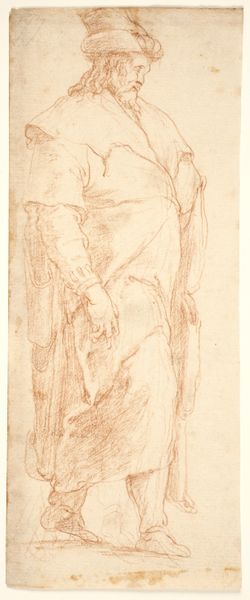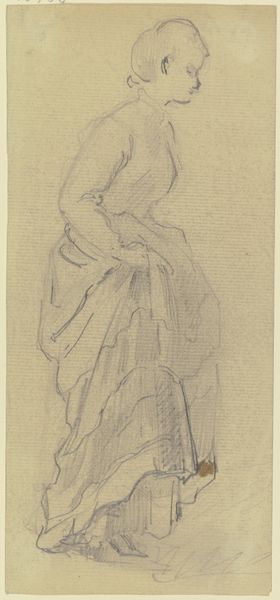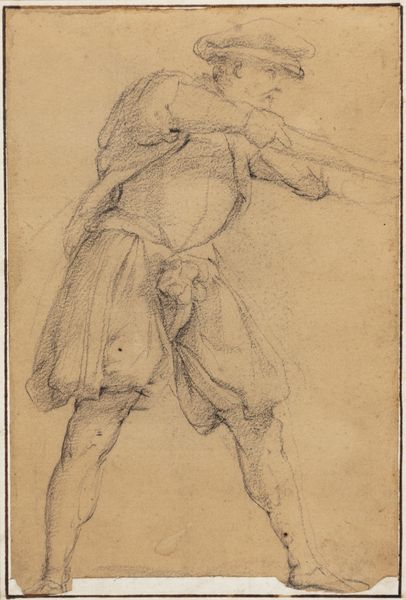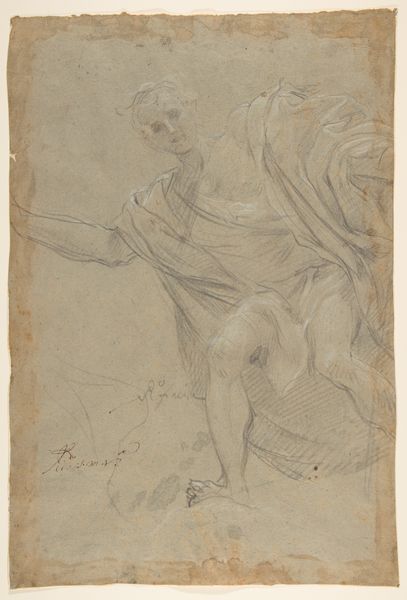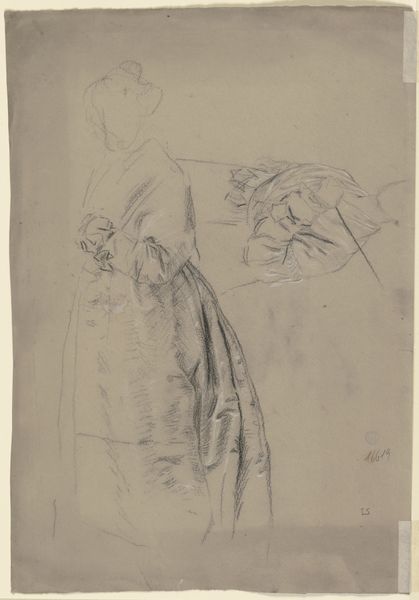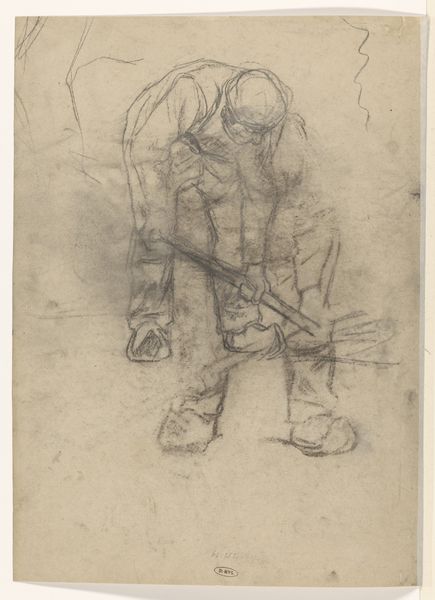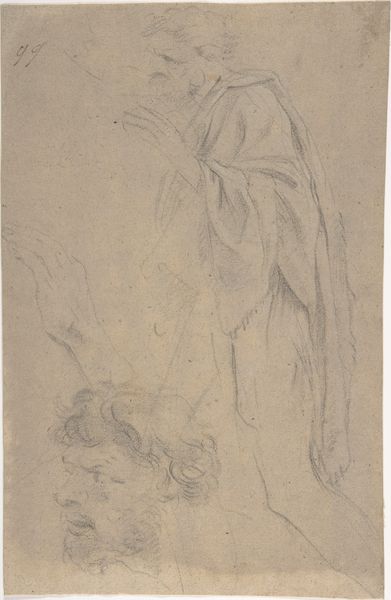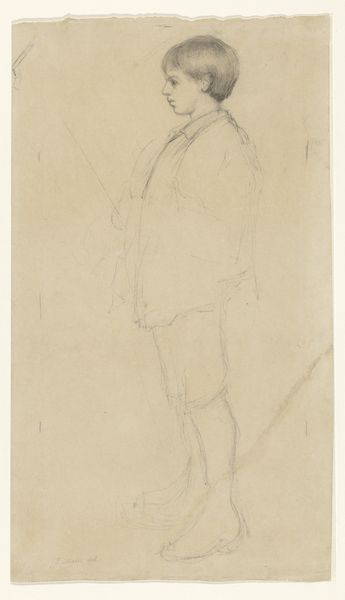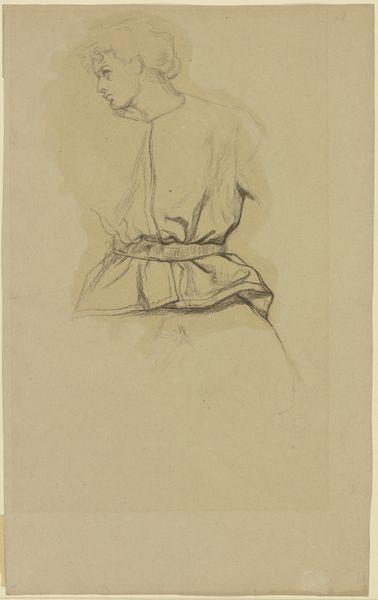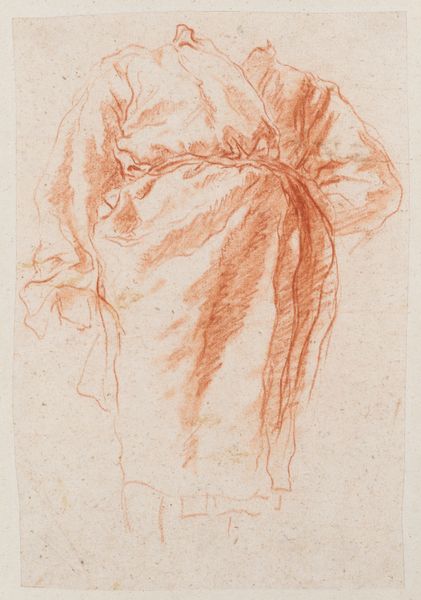
Drapery study for a man pointing downwards with a gun 1544 - 1615
0:00
0:00
drawing, pencil
#
drawing
#
figuration
#
11_renaissance
#
pencil
#
academic-art
Dimensions: 221 mm (height) x 156 mm (width) (bladmaal)
Curator: It feels like catching a secret whispered on paper. So raw, you can feel the artist's breath. Editor: Indeed, Filippo Paladini's pencil drawing, likely dating between 1544 and 1615, titled "Drapery study for a man pointing downwards with a gun", does offer that intimate glimpse into the mechanics of creation. It's all about the labor, really, seeing how he built form out of these careful lines and shaded planes. Curator: Mechanics is such a cold word for something so, dare I say, poetic? Look at the fabric; it swirls around the figure, each fold hinting at movement, emotion. There's almost a drama in the way the light catches. Even though unfinished it seems to capture some intensity. Editor: I'm fascinated by the relationship between the rough, sketched-in areas, particularly around the gun, and the relatively more defined folds of fabric. This tension between completion and incompletion draws me into thinking about what preparatory sketches like this actually *did* in the artistic workshops of the period. Were they strictly for practice or did they have market value of their own? What level of artistic skill and understanding of how clothing hangs on the body and reveals its form must go into its crafting? Curator: Precisely! They have so much appeal due to capturing a certain artistic liberty, or being a pure capturing of movement, light and fabric. You are not focusing as much on an artwork meant to stand for centuries, and therefore artists would dare even more. It’s all movement. Editor: What I also see when you say that is that what's interesting about this medium and technique is that it can teach the same techniques still nowadays, no? It teaches that observation, attention to detail, is very critical, regardless of if the study becomes something bigger after. Curator: It becomes a way for me, as an audience, to think that even imperfection contains beauty. Thanks, Filippo, wherever you are. Editor: And for me, a reminder to think critically about not only the finished product, but the processes of skill involved. A sketch of labor captured in time.
Comments
No comments
Be the first to comment and join the conversation on the ultimate creative platform.
